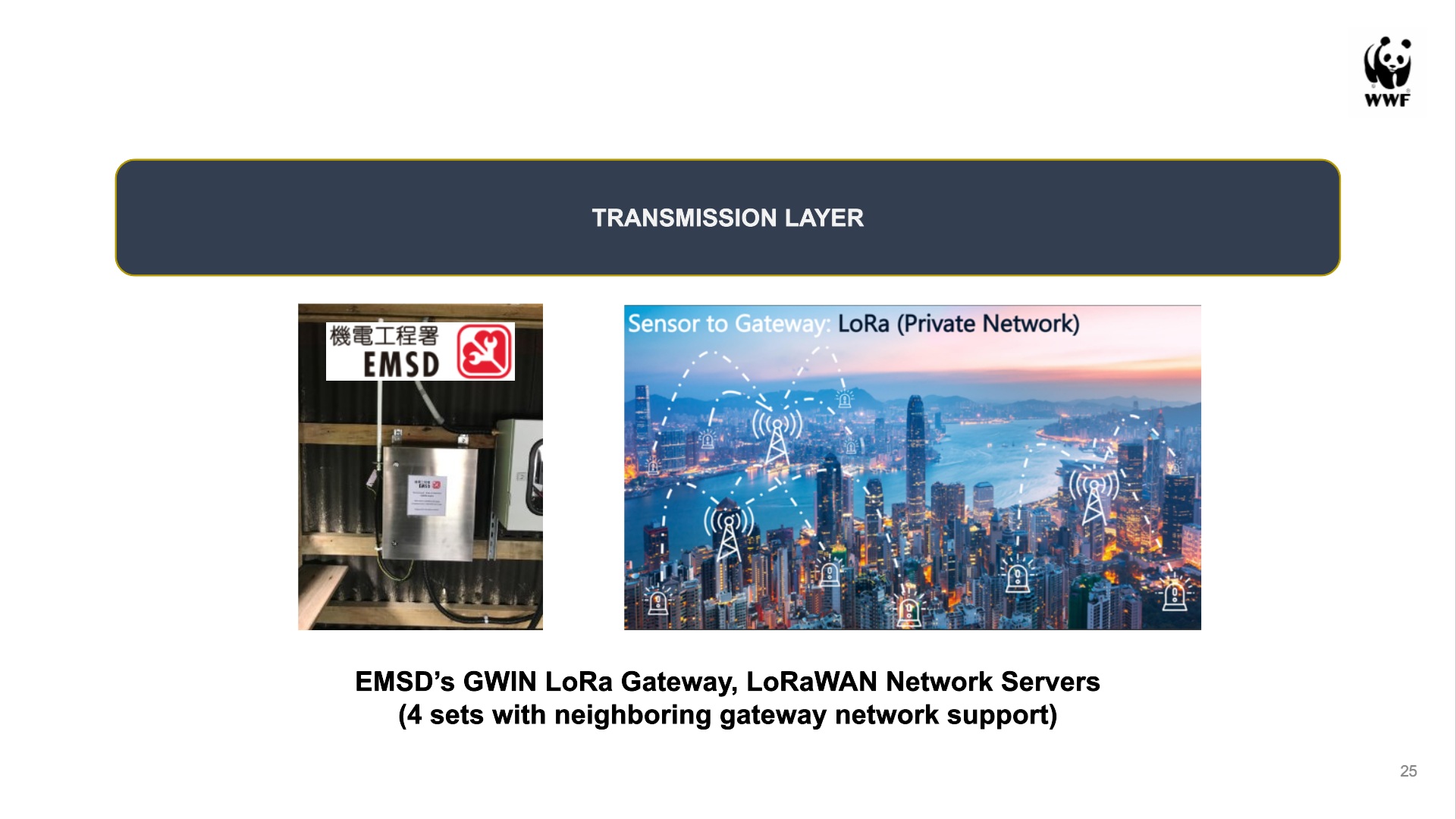Deployment - Partnership with local Government Department - Electrical and Mechanical Services Department (EMSD) for the utilization of Government-Wide IoT Network (GWIN)
Partnership with EMSD allows us to utilize GWIN network as a transmission layer for all sensors installed for this project at Mai Po Nature Reserve (MPNR) with no network recurring cost required.
The technology offers several benefits that make it well-suited for wireless data transmission in IoT applications. Its long-range capabilities allow data to be transmitted over a distance, making it ideal for vast rural areas like MPNR. Furthermore, LoRa’s efficient power consumption extends the battery life of battery-powered devices. LoRa data transmission also ensures the confidentiality and integrity of the data through secure protocols.
In this project, four GWIN LoRa gateways were installed by EMSD within Mai Po Nature Reserve (MPNR). The sensors installed at MPNR are connected to gateways via the low-power and private LoRa network and eventually connected back to the GWIN backend via the 4G network. Besides these four gateways specially installed for this project, other GWIN gateways near MPNR can further secure data transmission reliability.
In return, these four gateways can also help receiving signal from the sensors installed by various government departments in the surrounding area.
Traditional sensors would each require a 4G connection to connect to central servers. In the GWIN network, sensors are connected to gateways via the low power and private LoRa (Long Range) network. The network with low power consumption reduces the cost and complexity of installing the sensors and improves the security of the system and data without the need of using a third-party network.
